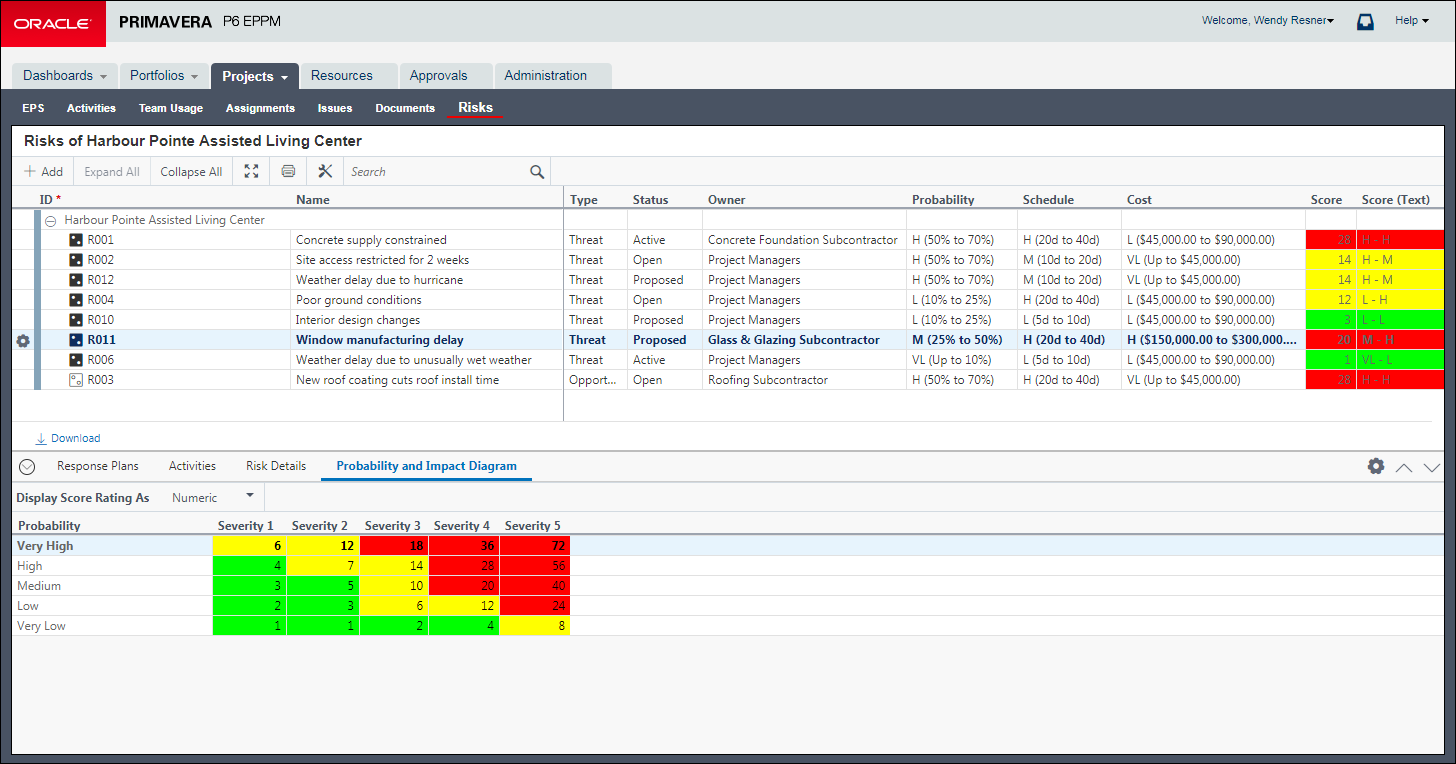Risk Scoring Method Description
The risk scoring method is a required input to the risk scoring matrix along with threshold values for probability, tolerance, cost impact, and schedule impact to calculate risk score. Review the following field definition and example to learn more about how risk scores are calculated.
Risk Scoring Method list
The type of calculation used to obtain an overall impact value, which is then used along with the probability to determine the score used to evaluate project risk. The overall impact value is calculated using one of the following three methods:
Highest Impact: The overall impact for a risk is set to the highest of all the impacts assigned to the risk.
Average Impact: The overall impact is determined by calculating the average of all impact values.
Average Individual Impact: The overall impact is determined by combining the value of each impact individually with the probability from the Probability and Impact Diagram. The total of all impact scores is then divided by the number of impacts.
Example: Harbour Pointe Assisted Living Center Risk Scoring Method
The Harbour Pointe Assisted Living Center project is a long-term construction project for which many risks have been identified. The scoring method used to calculate risk for this project is the Highest Impact method.
Risk Register Illustrating Risk Scores using the Highest Impact Risk Scoring Method

Review the following chart to understand how the score was calculated for Risk R001: Concrete supply constrained, and how the score changes depending on the risk scoring method assigned to the risk scoring matrix. Note that there are two impact types (Schedule and Cost) used for the calculations in this example.
Method | Calculation Details | Score |
|---|---|---|
Highest Impact | The highest impact for the activity is the Schedule impact, which is marked as High. High is equivalent to Severity 4 in the Probability and Impact Diagram (PID). Using the PID, a Severity 4 and a High Probability gives this risk a score of 28. | 28 |
Average Impact | The overall impact for this risk is the sum of 2 (Low Cost impact) plus 4 (High Schedule impact) divided by 2 (number of impacts) equals 3. In this example, the 3 represents a Medium impact and is equivalent to Severity 3 in the PID. Using the PID, a Severity 3 and a High Probability gives this risk a score of 14. | 14 |
Average Individual Impact | The score for Cost Impact, given a High Probability and a Low Cost Impact, is 7. The score for Schedule Impact, given a High Probability and a High Schedule Impact, is 28. The Average Individual Impact score is 7 plus 28 divided by 2 (number of impacts), which is rounded to 18. | 18 |
Last Published Wednesday, July 10, 2024